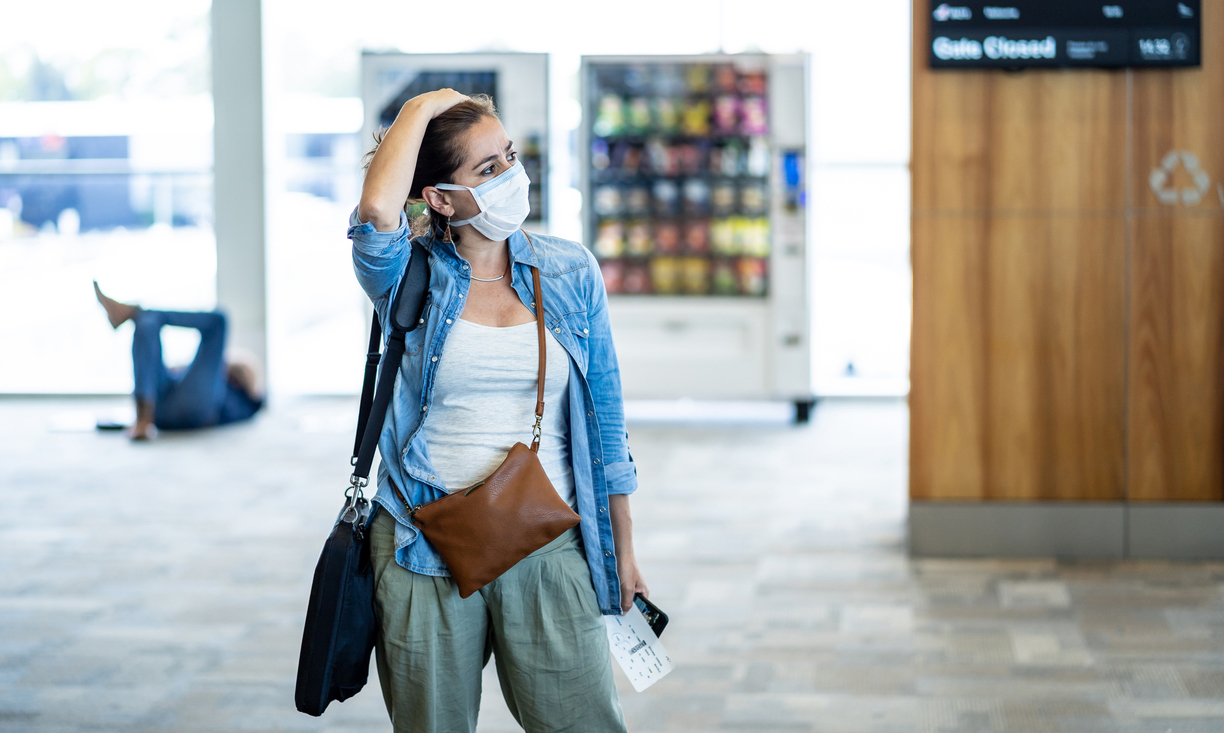
Share On Social!
When COVID-19 struck, it impacted Latinos more than others.
That is why Salud America!, a Robert Wood Johnson Foundation-funded national program at UT Health San Antonio, immediately applied its digital content curation model to create equitable, culturally relevant information and action opportunities to address pandemic effects on Latinos.
The result?
Record spikes in program website traffic and confirmation of the curation model’s capacity to increase people’s exposure to culturally relevant and action-oriented information for a novel topic like COVID-19, according to a new study published in the journal Health Promotion Practice.
“We have shown that digital content curation is an effective, measurable public health promotion tool to disseminate awareness-raising and action-oriented messaging around COVID-19’s disproportionate effects on U.S. Latinos,” said Dr. Amelie G. Ramirez, director of the national Salud America! program, based at the Institute for Health Promotion Research at UT Health San Antonio.
COVID-19 and the Need for Content Around Health Equity for Latinos
Before COVID-19, Latinos faced many health inequities.
These include lack of access to healthcare, social support, places to play, healthy food, affordable housing, early education, and more. These inequities cause Latino health disparities in obesity, chronic disease, and certain cancers.
 When COVID-19 arrived, new disparities arrived, too. Recent data shows that:
When COVID-19 arrived, new disparities arrived, too. Recent data shows that:
- In adults, Latinos comprise over 30% of all U.S. coronavirus cases.
- In youth and young adults ages 0-24, Latinos comprise over 40% of all U.S. coronavirus cases.
- Latinos have been 3x as likely as Whites to become infected.
“This is happening because COVID-19 is worsening inequities that had already existed. These inequities make it even harder for Latino communities to achieve good health,” Ramirez said. “And this is why our team works hard to curate content, stories, and action opportunities to address Latino health inequities.”
The Science of Salud America! Digital Content Curation
At Salud America!, we use digital content curation to raise awareness of the health issues that disproportionately burden Latino children and families, as well as promote solutions and build people’s capacity to change these issues.
Our digital content curators are Amanda Merck, Josh McCormack, and Pramod Sukumaran.
 They each take a three-step approach—collect, craft, and connect.
They each take a three-step approach—collect, craft, and connect.
Collect. Our digital content curators daily sort through vast amounts of content on the web about Latino health topics. In their searches, they use a variety of criteria: their Latino health equity research topic, the types of content we promote, the geographic areas where there are a majority or growing population of Latinos, the relevance to Latinos, and whether there is a Latino behind emerging changes and solutions.
Craft. Curators extract the most relevant points from the original content to write posts about Latino health equity resources, policy/system changes, and/or Latino peer models of policy and system changes. Curators use cultural cues, cite relevant scientific evidence, and emphasize the impact on Latinos within each post’s title and body content. Each post explores emerging solutions and includes cues to take action for grassroots change. Also, each post is reviewed for its readability and search engine optimization.
Connect. We publish digitally curated content on our website. Each curated post also features Latino-focused visuals. Our peer-modeled stories often also include videos with interviews of the Latino policy/system change-makers. Then we bring the website content to our Latino audiences across our different channels. These include social media, email communication, partners and scientific groups, and Facebook Groups.
“We have used this digital content curation model for years, adapting it flexibly to new topics and directions in Latino health,” Ramirez said.
Salud America! Digital Content Curation around Latino Health Equity during COVID-19: Methods
For COVID-19 and Latino health equity, the Salud America! program focused on digitally curating these types of content:
- Website blog posts exploring pandemic effects on Latinos (i.e., virus knowledge, disparities in case/death rates, economic fallout, food insecurity, affordable housing, paid sick leave, distance learning, risk factors)
- Peer-modeled stories of people responding meaningfully to the crisis.
- Salud Talks Podcast episodes addressing pandemic health.
- #SaludTues Tweetchats engaging Twitter users on COVID-19 solutions
- Action tools, such as those equipping school leaders to make changes to address childhood trauma, even while schools are closed, and for people to use their digital voice for change for health equity.
- A localized data tool for advocates to start local community change.
Salud America! Digital Content Curation around Latino Health Equity during COVID-19: Results
The new study in Health Promotion Practice examined the program’s COVID-19 content curation between March 5, 2020, and May 3, 2020.
This includes 43 in-depth blog posts on Latino health equity and coronavirus, seven tweetchats, three podcast episodes, three action opportunities, two bilingual infographics, and 1 landing page featuring all content on COVID-19 and Latinos. This content daily fed the program’s network of over 300,000 providers, researchers, and community leaders across multiple platforms.
 This coronavirus curation led to record spikes in Salud America! website users and traffic. Comparing the time period of March 5-May 3, 2019, to the same span in 2020, during coronavirus the website has:
This coronavirus curation led to record spikes in Salud America! website users and traffic. Comparing the time period of March 5-May 3, 2019, to the same span in 2020, during coronavirus the website has:
- nearly 3x the number of website users (43,212 in 2019; 127,069 in 2020);
- 2.5x the number of page views (69,803 in 2019; 173,508 in 2020);
- with longer duration (2.43 minutes in 2019; 3.33 in 2020);
- and a diversified gender audience (30% women in 2019; 42% women in 2020), according to Google Analytics.
“While heightened public demand for COVID-19 information may have contributed to these analytic results, our curation approach enabled us to meet demand with applicable pandemic content related to Latinos,” Ramirez wrote in the study.
What Still Must Be Done for an Equitable COVID-19 Response
Salud America! is continuing its digital content curation around COVID-19.
This includes a focus on solutions:
- Increase income and reduce poverty. Such as increasing SNAP benefits.
- Improve working conditions. Such as expanding healthcare coverage and strengthening paid leave practices.
- Ensure Health Equity Is a Component of the Recovery. Such as promote culturally relevant communication to reach our population with critical public health messaging.
- Address Systemic Racism and Discrimination. Racism is a public health crisis. Systemic racism/discrimination makes it harder for Latinos and others of color to get healthcare, housing, transportation, education, employment, healthy food, safe treatment by police, all of which are exacerbated in the time of the coronavirus pandemic. Our team at Salud America! built an Action Pack, “Get Your City to Declare Racism a Public Health Crisis Action Pack” to help anyone get input from local social justice groups and advocates of color, and start a conversation with city leaders for a resolution to declare racism a public health issue along with a commitment to take action to change policies and practices. It will also help build local support. Find the Pack at to/endracism.
“We continue to need both immediate focus to ease the coronavirus pandemic and its impact on Latinos and people of color,” Ramirez said. “We also need long-term strides to address underlying inequities that are aggravated during this time.”
By The Numbers
142
Percent
Expected rise in Latino cancer cases in coming years



